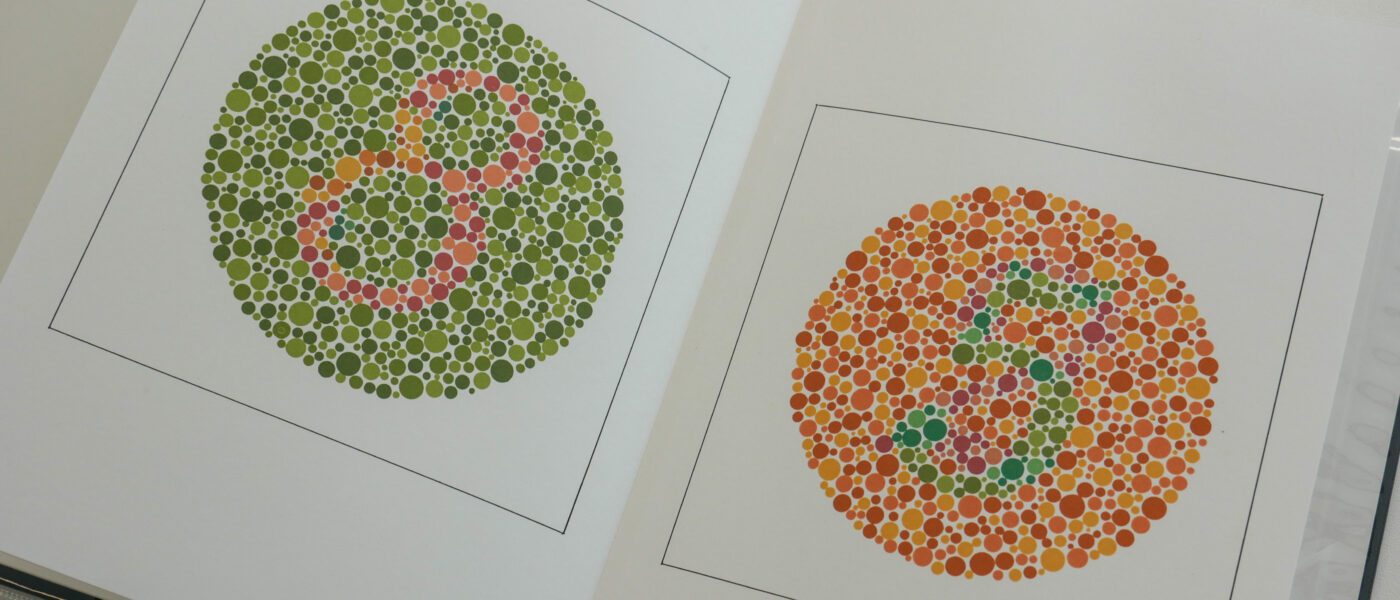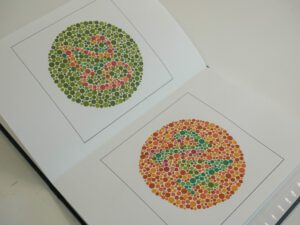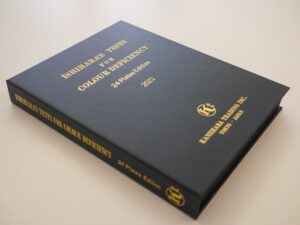
The Ishihara test is a color blindness test for red-green color deficiencies. With this test you can find out if you suffer from color blindness. The Ishihara test is one of the most widely used color blindness tests worldwide. In our webshop you can find the original Ishihara tests that we always have available from stock.
History Ishihara
The Ishihara color test is named after the designer; Shinobu Ishihara, he was a professor at the University of Tokyo. The Ishihara test was first published in 1917. Shinobu Ishihara was born in 1879 to a family in Tokyo. He started his education at the Imperial University, when he had just finished his education in ophthalmology in Germany, the First World War started in Europe. During his military duty, he was asked to design a color blindness test. Ishihara studied existing tests and combined elements of the Stilling test with the concept of pseudo-isochromatics, resulting in an improved and more accurate test, the Ishihara test.
Ishihara plates
The color blindness test consists of a number of different plates. These plates can be recognized by a continuous circle of differently colored dots. Within this patterned circle are other colored dots that form a number or shape. These numbers or shapes are easily recognizable by people who have normal color vision. When someone suffers from red-green color blindness, these numbers or shapes cannot be recognized. A number of Ishihara plates are intentionally designed for people with red-green color blindness. Only they recognize the numbers or shapes that are incorporated therein. People with normal color vision will not recognize anything in this. The full test consists of 38 plates, but often after a few plates it becomes clear whether someone suffers from color blindness. There are also Ishihara color tests consisting of 14 plates or 24 test plates. In some plates, no shape or number is visible, but the viewer has to draw a line instead of reading a number.
Different types of Ishihara plates
- Demonstration plates: the shapes or numbers on these plates can be recognized by everyone, whether or not they suffer from color blindness. These plates are not included in the final score. Ishihara color test
- Transformation plates: persons with a color vision defect should see a different figure than persons with normal color vision.
- Vanishing plates: only persons with normal color vision can recognize the figure in these plates.
- Hidden Number Plates: Only persons with a color vision defect will recognize the figure in these plates.
- Diagnostic plates: these plates are intended to determine the type of color vision defect (protanopia or deuteranopia) and its severity.
- Tracing Plates: Instead of recognizing a number or shape in this plate, the viewer is prompted to draw a visible line across the plate.
There are two types of red-green color vision impairment: the person has difficulty perceiving green (deuteranopia), and the other form (protanopia) has difficulty perceiving red.
Test procedure
It is important that sufficient daylight is present during the test, by means of a daylight lamp with a temperature of approximately 6000-7000 K (ideal: 6500 K, color rendering index (CRI) >90). This results in an accurate test result. Fluorescent lamps are often used in school testing, but the color of fluorescent lamps and their CRI can vary widely. Research has shown that fluorescent lighting gave better results and faster recognition speed compared to CFL and LED luminance in trichromats. Incandescent bulbs should not be used as their low temperature and yellow color will give very inaccurate results. A good testing technique is to give only three seconds per plate for an answer and not allow any touching of the numbers by the subject. It is best to use the test in random order.
Buy Ishihara test
Click here for the test with 14 plates.
Click here for the test with 24 plates.
Click here for the test with 38 plates.
Online Ishihara test
Since the test became available, the Ishihara color blindness test has been widely used worldwide due to its ease of use and high accuracy. Online there are also several websites where you can take the Ishihara test online, but this is not reliable for a valid test result. For an accurate and reliable diagnosis, we always recommend using the real Ishihara test in book form.
Source: https://en.wikipedia.org/wiki/Ishihara_test



